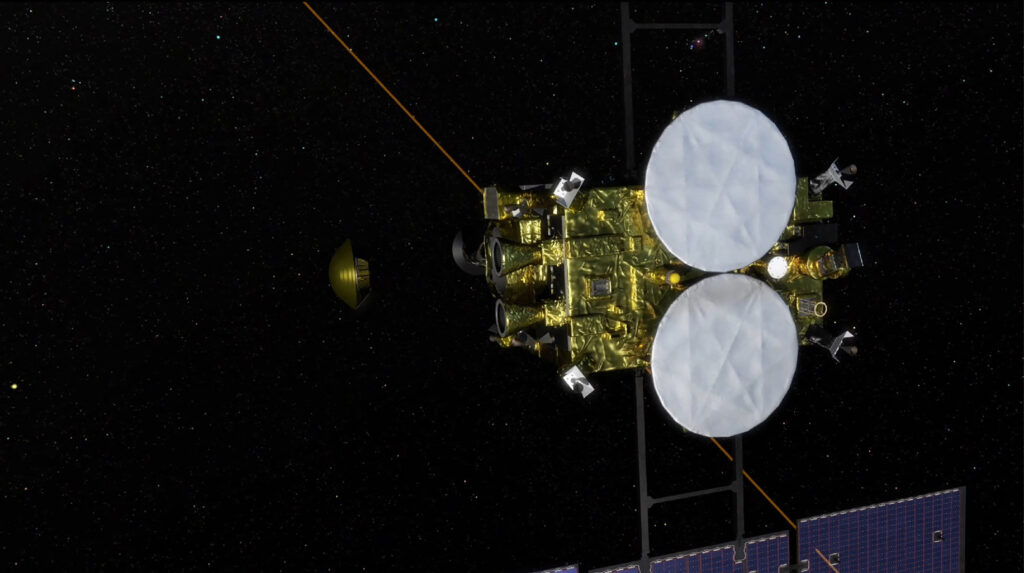
- ARAB NEWS
- 01 Aug 2025

TOKYO: Ten years after its launch, Japan’s Hayabusa2 unmanned asteroid probe, which has successfully collected samples from the asteroid Ryugu, is continuing its journey to search for clues to the origins of life and water on Earth.
After taking some six years from its launch to drop on Earth in December 2020 a capsule containing sand and other samples collected from Ryugu, Hayabusa2 is currently on an extended mission, aiming to reach another asteroid.
Hayabusa2 has “outlived its design life, and could break anytime,” said Yuya Mimasu, operational leader of the extended mission at the Japan Aerospace Exploration Agency, or JAXA.
“We operate it every day, first of all hoping for its ‘good health,'” Mimasu said. “Beyond that, we’d like to carry out exciting explorations like we did with Ryugu.”
Hayabusa2 was launched from the Tanegashima Space Center in the southwestern Japan prefecture of Kagoshima on Dec. 3, 2014, and reached Ryugu in June 2018.
After making its first landing on Ryugu in February 2019, Hayabusa2 created an artificial crater and touched down on the asteroid again, near the crater, some five months later, successfully collecting samples of underground materials.
The Hayabusa2 capsule, which returned to Earth in December 2020, contained some 5.4 grams of sand and other samples, more than 50 times the target amount.
Organic substances that are the building blocks of life, such as amino acids and parts of RNA, as well as liquid water, have been discovered from the samples, and studies are continuing to search for clues to the origins of life and water on Earth.
Hayabusa2 is currently heading for another asteroid, 1998 KY26, which has a diameter of only about 30 meters and is spinning rapidly. It aims to reach the new target asteroid in July 2031.
Hayabusa2’s extended mission is also drawing attention from the perspective of planetary defense for disaster prevention, as there have been no detailed observation cases up to now for small asteroids like 1998 KY26, which carry the risk of crashing into Earth’s surface around once every 100 years.
However, three of Hayabusa2’s four ion engines that have supported its 10-year journey have encountered problems.
At present, JAXA believes it is still possible for Hayabusa2 to reach the asteroid in 2031. However, utmost care is being taken in operating the Hayabusa2 as some kind of action would become necessary should the last surviving engine go wrong as well.
“I want Hayabusa2 to continue its journey more than anyone else,” said JAXA’s Mimasu, who has been part of the Hayabusa2 project since the early development stage. “I’m going to look after it until its very end.”
JIJI Press